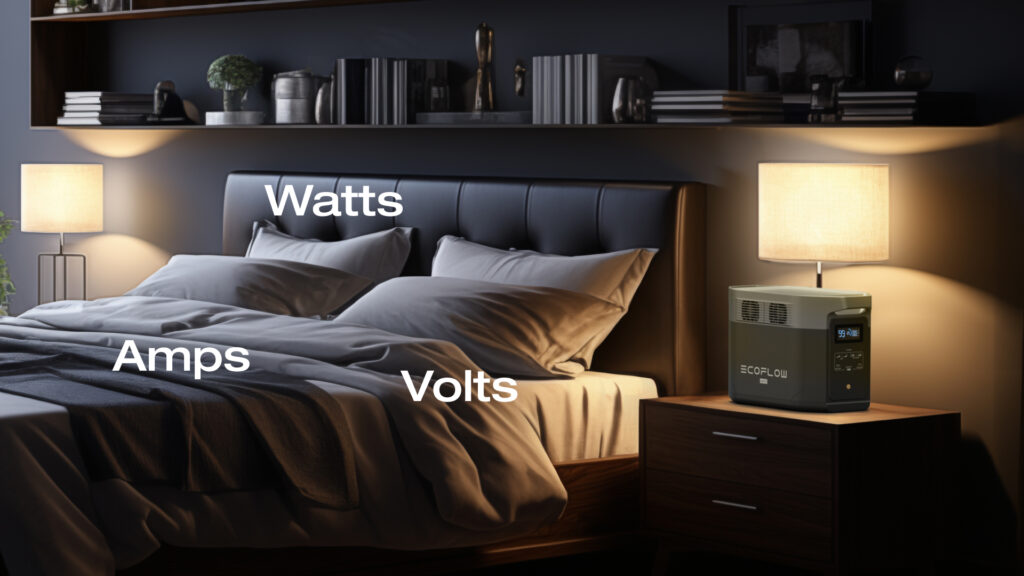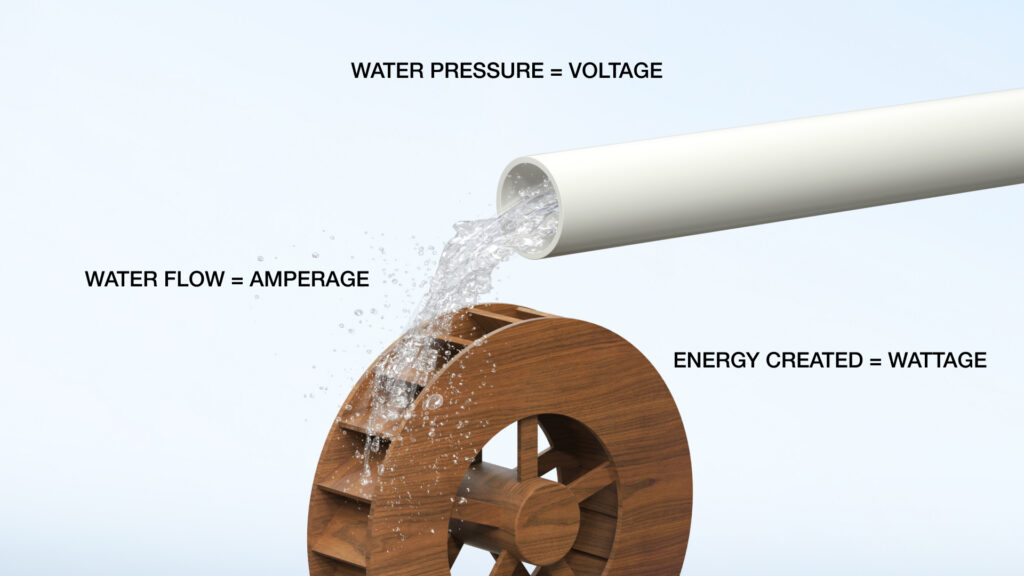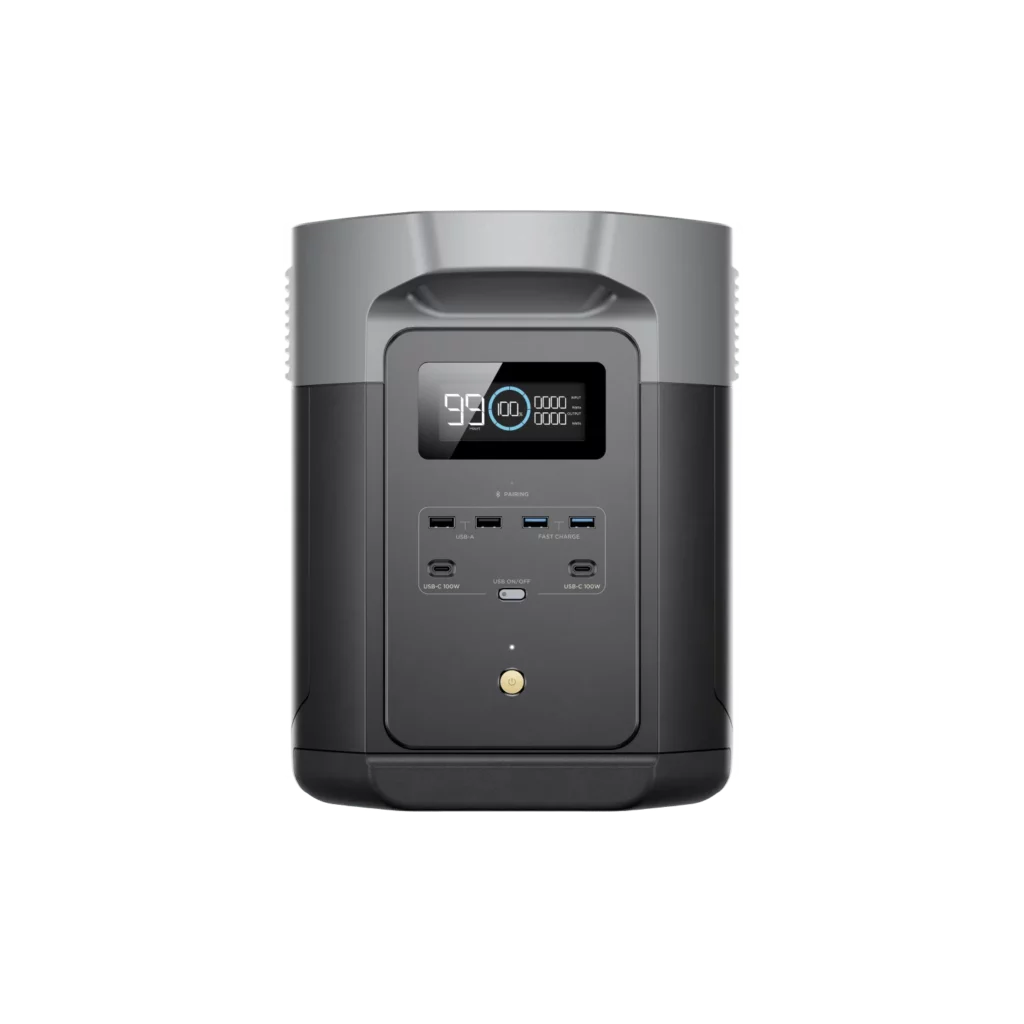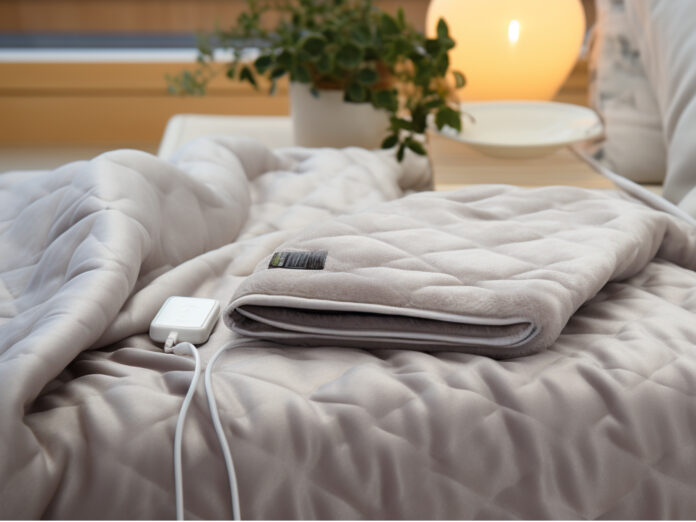Table of Contents
EcoFlow DELTA 2 Max portable power stations can provide off-grid power to safely operate electric blankets during outages or in remote settings. But terminology like watts, volts, and amps can seem confusing. This in-depth guide will demystify key electric blanket power metrics so you can choose and use your blanket informedly.

What Is an Electric Blanket?
Before digging into power terminology, let’s quickly cover what exactly electric blankets are and how they work.
An electric blanket is a blanket with internal wiring that carries an electrical current to produce heat. The wires are evenly distributed across the entire surface of the blanket. When powered on, the electric current flowing through the wiring causes the wires to warm up. This gently heats the blanket, which then transfers warmth to anyone underneath.
Electric blankets are commonly used to preheat beds prior to sleep. Most models have controls that allow users to adjust the heat setting as desired. Once warm, the blanket can be turned off so it does not remain powered on all night. Using an electric blanket can help reduce home energy costs and provide targeted warmth just where you need it.
Now that we know the basics of electric blankets, let’s unpack what all those power-related terms mean.
Watts – The Measure of Power
The wattage rating indicates an electric blanket’s power consumption or rate of energy use. Wattage measures how much electricity the blanket draws from your home’s power source in order to generate heat.
Watts measures power, which is the rate at which energy is transferred. One watt is defined as one joule of energy transferred per second. So a 100-watt electric blanket consumes 100 joules of electrical energy per second.
The higher the wattage, the more power the blanket uses to create heat. A 100-watt blanket may only warm up moderately, while a 200-watt option can get quite hot. However, higher wattage also means greater electricity usage.
Most household electric blankets range from 100 to 300 watts in power rating. Some ultra-warm blankets can use 400+ watts. Factors like blanket size, materials, and intended use impact optimal wattage. We’ll cover specific recommendations later on.
Volts – The “Pressure” of Electricity
Volts measure the electrical “pressure” or force that pushes electrons through a circuit. It represents the potential energy level that drives the electric current.
You can compare volts to the pressure of water in a pipe. Higher water pressure enables more water to flow easily. Similarly, higher electrical pressure (voltage) allows more electricity to flow through the wires.
The standard household voltage in North America is 120 volts (V). Electric blankets sold here are designed and rated to safely operate at this 120V level.
Exceeding the voltage rating can overload the blanket’s internal wiring insulation and cause overheating risks. Using a too-high voltage is an electrical hazard and fire risk. The blanket’s voltage specification must match the voltage supplied by your household outlets.
Amps – The Flow of Electrical Current
Current is the flow or rate of electron movement through a conductor. Electric current is measured in amps (A).
Amps indicate how many electrons pass through the electric blanket’s wiring each second. You can compare electric current to the volume of water flowing through a pipe.
Amps are determined mathematically using Ohm’s Law:
Watts (power) = Volts (pressure) x Amps (current flow)
So for a 120V electric blanket with a wattage of 200W, the current equals:
Amps = Watts / Volts
Amps = 200W / 120V = 1.67A
The amperage provides a maximum safe level for the amount of electrical current the blanket is designed to handle. Exceeding the amp rating can cause overheating and danger of shock or fires. Most household electric blanket amp ratings range from 1A to 2A.

Wattage Recommendations by Blanket Size
Here are general wattage guidelines for electric blankets based on their size:
Twin/Single Size
- Low power: 100W
- Medium power: 150-200W
- High power: 250+W
Full/Double Size
- Low power: 150W
- Medium power: 200-250W
- High power: 300+W
Queen/King Size
- Low power: 200W
- Medium power: 250-300W
- High power: 350+W
Choosing the right wattage level for your needs depends on several factors:
Room insulation – A lower wattage may suffice in a well-insulated bedroom.
Blanket materials – Higher fill power and thicker fabric retain more heat at lower wattages.
Individual needs – People more sensitive to cold may prefer higher wattages for ultra-warm blankets.
In most cases, low to medium-power blankets provide sufficient gentle warmth for the average user. However, there are always individual variations in desired heating intensity.
Electric Blanket Tech Specs
To gain full insight into your electric blanket’s electrical requirements, check the product tag or description for these key technical specifications:
Voltage – The standard electric blanket voltage is 120V. This matches typical North American household outlets. Using the proper voltage ensures safe operation.
Amperage – The maximum current flow the blanket is designed to handle safely. Look for a rating between 1A to 2A. Never exceed the listed amp rating.
Wattage – The blanket’s power consumption indicates heat output. Choose a wattage suitable for your bed size and warmth needs.
Tracking these specs provides insight into the blanket’s electrical load capabilities and estimated operating costs. It also ensures you choose an option designed for safe use at standard household voltages.
Estimating Electric Blanket Operating Costs
A common concern many people have is how much using an electric blanket will increase their electricity bill. The operating cost depends primarily on the blanket’s wattage rating and duration of use.
Let’s estimate costs for an example scenario:
- 150 watts electric blanket
- Used for 2 hours each night
- Electricity rate of $0.12 per kWh
To determine the daily energy consumption in kWh:
Power (watts) x Time (hours) / 1000 = kWh used
So for our example:
150W x 2 hours / 1000 = 0.3 kWh
Then to calculate the cost:
Energy (kWh) x Electricity rate
0.3 kWh x $0.12/kWh = $0.036
For 30 days of use, the total cost would be:
$$0.36 x 30 = $$10.80 per month*
Using an EcoFlow DELTA 2 Max portable power station minimizes electric blanket operating costs for off-grid use since no electrical bill is incurred.

While costs add up over time, using an electric blanket for limited daily durations is quite inexpensive for most people. You can further reduce power use by following the steps.
To reduce electric blanket power use:
Only preheat your bed for 1 hour before sleep, if that’s enough warmth.
Use a lower-wattage blanket if it keeps you sufficiently warm.
Add an automatic shutoff timer for safety.
Also, proper insulation helps retain warmth with less heating time needed. It prevents heat from escaping once the bed is warm. So with good insulation, you don’t need to run the blanket as long.
Safety Tips and Precautions
Electric blankets come with a bunch of safety features when you use them right. But you gotta follow the manufacturer’s instructions to reduce risks, you know? Here are some key precautions:
- Don’t go over the voltage rating, cause too high of voltage can damage the wiring.
- Watch out for signs something’s wrong with the blanket like it getting too hot or you see sparks in the fabric.
- Don’t leave it on when you’re not around or while sleeping. Just use it to preheat your bed for 1-2 hours before you go to sleep.
- Don’t tuck the blanket in tight, that can make it overheat in a dangerous way.
- Replace any electric blanket that’s more than 10 years old or looks worn out.
EcoFlow DELTA 2 Max portable power stations give steady, clean electricity to safely run electric blankets with the normal blanket cord.
With regular use, today’s electric blankets have lots of safety stuff to prevent overheating, shocks, and fires. Things like:
- Auto shuts off if it detects overheating.
- Wiring with insulation and protective covers.
- Thermal cutoffs that trip when overloaded.
- Optional timers that turn it off automatically.
But it’s still smart to replace old blankets and check your electric blanket a lot for damage, ya know, so you can use it as safely as possible.
Conclusion

Getting the specs like watts, volts, and amps helps you pick the right electric blanket and use it safely and smartly.
Look for a well-made blanket with enough power (watts) to quickly preheat your bed size at normal household voltage (120V). Watch the amp rating so you don’t overload the circuits. With reasonable daily use before bedtime, an electric blanket can give cozy warmth without using too much energy or risk. Just be diligent about the wattage, timers, and replacing old blankets.
EcoFlow DELTA 2 Max portable power lets you use electric blankets without grid power, for reliable warmth anywhere. Stay cozy and sleep easy by figuring out your electric blanket’s power details.
